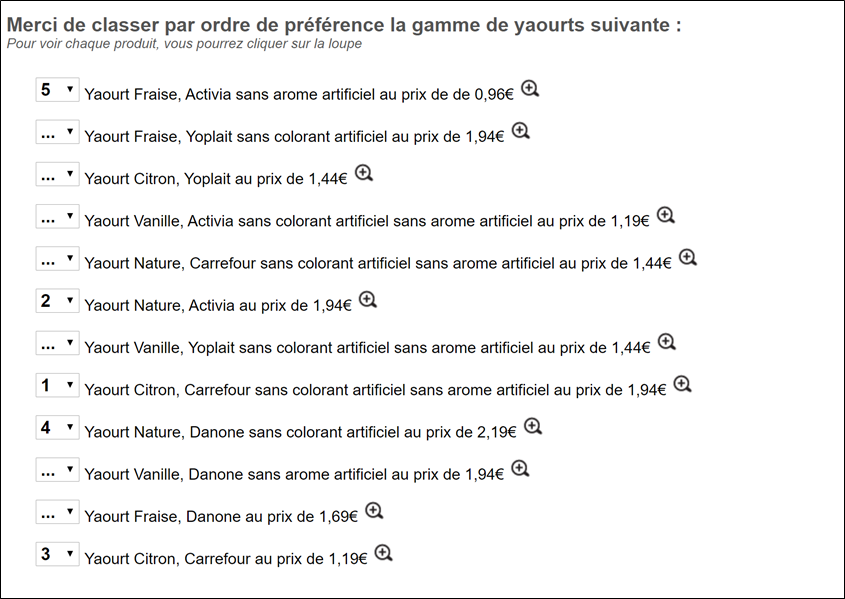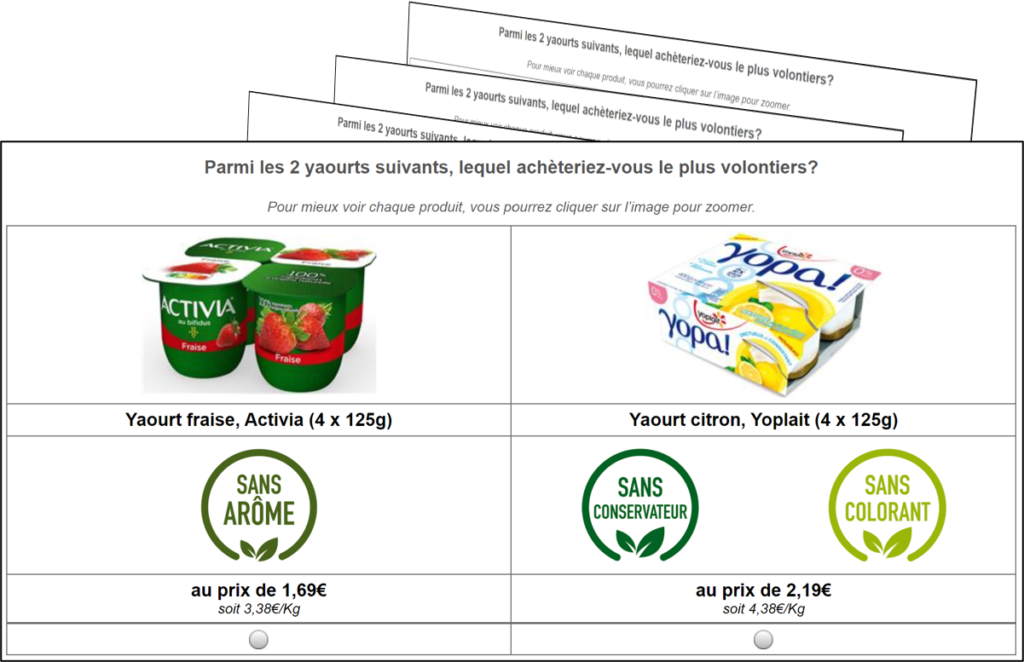How to identify the criteria impacting a consumer in his product or service choice.
For who? What for?
Conjoint analysis (a survey-based statistical technique) helps clarify consumer preferences based on the importance given to different characteristics of a product or service.
Understand how variations in characteristics of a product or service impacts the overall consumer preference.
This method also allows you to assess the potential of a future product or service, either from real or imagined factors, made up of a variety of characteristics which already exist on the market.
Furthermore, the conjoint analysis method is a suitable approach in a situation where the range of attributes you wish to test is too large to be investigated exhaustively.
Advantages of a conjoint analysis:
- It evaluates each item/level of a variable (that is to say its weight within the other items/levels) as well as the measurement of its sensitivity, strength and importance (of this variable)
- It tests a relatively large number of different levels (of this variable)
A conjoint analysis will thus be particularly suitable for:
- Introducing one or more new products/services to the market
- Modifying one or more products/services already on the market
Myth busters
« Conjoint analysis is complicated … »
The high level of competency of the Solirem team makes this cutting-edge methodology accessible to your business, allowing you to focus on your marketing know-how.
« Conjoint analysis is like a black box…»
All the technical aspects, even the most complex, are outlined and explained by Solirem in advance in order to give you a clear understanding of the whole process.
The concept of a « Trade-off »
The term conjoint analysis literally means Trade off or a ‘fair compromise’. The term Trade off comes from the model’s characteristics: estimating to what extent, in terms of choice (or preferences, score points, market share, etc.), a specific item/level of an attribute/variable (for example: a brand) will be compensated by another item/level on another variable (for example: the price).
In addition, this method seeks to describe, explain, and predict choices of the respondent (on a product, service or anything else an individual might select)
Building a model means EXPLAINING and PREDICTING.
EXPLAINING:
Within the framework of a conjoint analysis, there should be an understanding of the different dimensions among a product or service in order to EXPLAIN which choices are in favor and those of which are not. It is by simultaneously taking into account these different aspects of a product that makes this model of analysis called a conjoint analysis.
PREDICTING:
In order to PREDICT, the model is all-inclusive and designed sufficiently large to be able to predict choices, preferences, or even the scores of a product composed of different variables. Especially when a specific combination has not even been tested yet!
A conjoint analysis, multiple conjoint analyses…
Strictly speaking there are two types of conjoint analyses:
- The first approach presents the respondent with a set of objects to be classified from ‘most’ to ‘least’ preferred

- The second approach presents predetermined objects/items the respondent can choose from.

This second type of analysis, The CBC (Choice-Based Conjoint) is referred to as the key in conjoint analysis. The approach puts the interviewee face to face with choices that resemble real-life situations as much as possible.
The CBC approach allows you to respond to almost all marketing situations!
We would like to mention that variants of this method exist, akin to the following adaptive approaches:
ACBC (Adaptive Choice-Based Conjoint): This is an expansion on the CBC and particularly suitable for situations where fundamental/essential attributes are extremely numerous. The ACBC approach works by composing/designing 3 stages: creating the ideal product (Build Your Own), the evaluation of only a few of the basic attributes, followed by a classic CBC phase.
The approach is much longer than a traditional CBC knowing that a large number of attributes can already be evaluated in the CBC using a partial-profile design.
MBC (Menu-Based Conjoint): This particular progression of the CBC is made for specific situations such as creating menus and à la carte items or for evaluating options and additional services. The MBC makes it possible to deal with very specific and very complex situations, but the flip side of this method lies in the expertise, time and cost required.
MBC should not be considered in situations where the objective is to present a complete product.
Learn more about